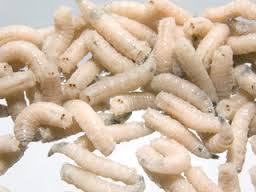We present to your attention the best bait for carp fishing in summer. For successful carp angling, you should use a lot of plant and meat nozzles.
While choosing them, the fisher must remember some factors:
1. Method of fishing;
2. Type of pond;
3. Season;
4. The place of fisheries;
5. Time of day;
6. Weather conditions;
7. The presence in the lake or river of aggressive fish species, which can not only spoil the fisherman’s mood but also adversely affect the results of the catch.
Meat lures for carp fishing:
1. Worms;
2. Insect larvae;
3. Shellfish;
4. Pork unsalted fat;
Vegetable bait:
1. Corn;
2. Oil cake;
3. Bread;
4. Porridge;
5. Macaroni;
6. Potatoes;
7. Peas.
In summer carp can be interested in meat food because it’s typical for this time of the year. Catch using porridge or peas in this time is very hard because these nozzles are “off-season” and the fish often passes it. Well, boiled potato on the hook after winter looks strange.
Rainworm

A perfect nozzle to catch big fish is a big rainworm, or as some say, trainer, it can be found in parks or gardens. Frequently it crawls out of the earth. It can be 20 cm long, and have a 1 cm diameter, colour – brown, and in the tail part is a little lighter (pink, closer to white). Digging it with the show is hard because worm digs into the earth for 1 meter. And finding it is not easy, because it is collected after the rain.
Purulent worm

Purulent worm – is a most common type of nozzle for catching not only carp but also other species of fish. It is dug on the baths of the rotting pus. Usually reaches a length of 4-5 cm. When pressed on his body emits a yellow liquid, which has a specific smell, so on the hook, it is planted a little crumpled to attract fish.
Pinkie

Pinkie – is a larva of the meat greenfly. Some fishers breed them – they throw fish with a ripped belly to the heat, it dries up and emits a bad smell. Flies fly to it and lay their eggs. After 3-4 days they turn into microscopic and white larvae. They are collected in a box and put in a more relaxed place (up to 20 degrees above zero). After 2-3 days they will grow to average size, and they can be hooked. But the most important thing is not to leave them for too long, because after five days larvae will turn into the fly. But since the process of cultivation of sponges is not a very pleasant thing to do, many fishers directly buy them in a specialised store.
Clam

Clam – is a fine nozzle that is ideal for all sorts of fish (perch, pike, catfish, carp). They are caught in rivers; often they lie in the water just by the shore. Their shells are opened with a knife, and the body is split in half, and put on a hook. But in the last time everyone forgot about this nozzle, and in vain – sometimes it brings excellent results. Pork bacon – bait came to us from USSR, was used in villages and small towns. You might think that this is insanity, but the results when catching carp with bacon can be very unexpected. No one can say for sure why this product is so good for fish. Fresh bacon (not salted or frozen) is cut into cubes and put on hooks. With the summer a diversity of carp nozzles increases. Water becomes warm, and the smell of plant lures is spread on many metres, this is why using it in summer period shows best results.
Potato

Potato – is the most efficient and most uncomplicated nozzle for carp fishing. It is boiled, but not entirely, so it won’t fall apart in the water, and put on the nose. Some fishers dip it in sunflower oil.
Corn

Corn, peas, grains of wheat, oats, rice are used for catching large specimens of white fish (crucian carp, roach, bream, carp, tench). Preparations are straightforward – in the evening, before going fishing, the grain is placed in a tissue bag and put in a thermos bottle. Pour boiling water and close. By morning, the bait is ready for use.





